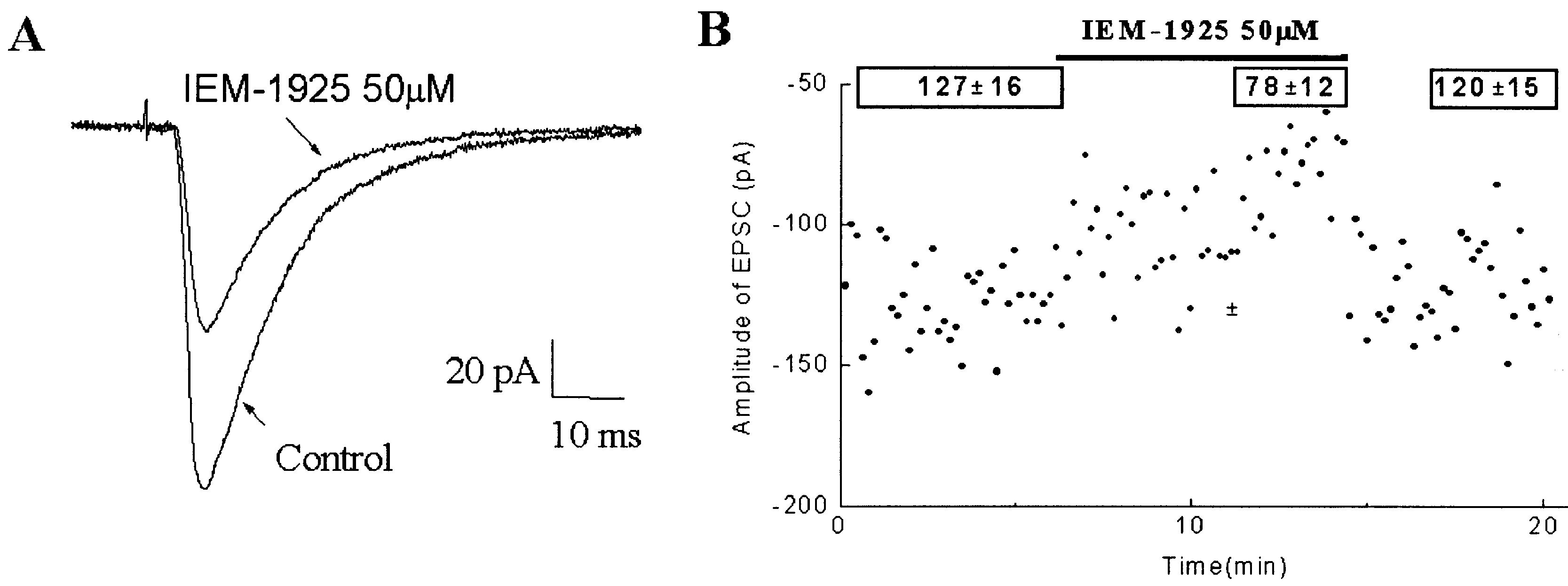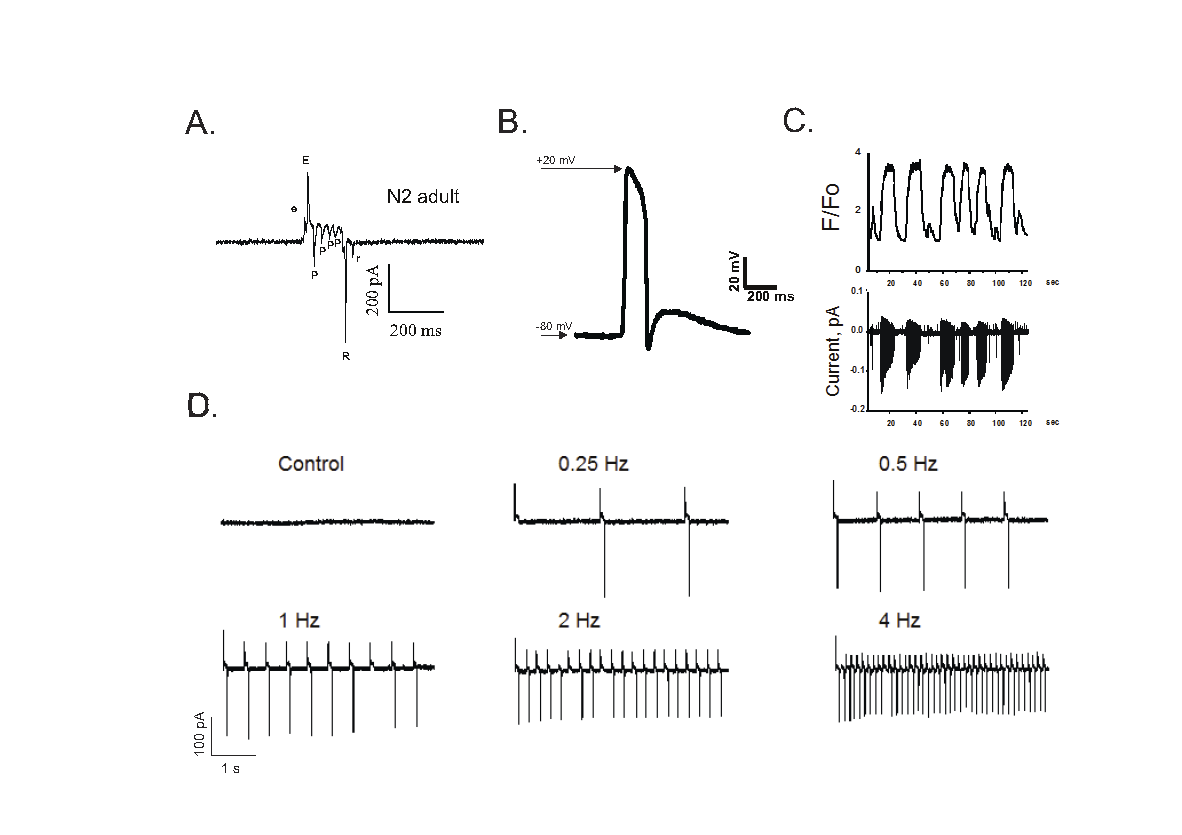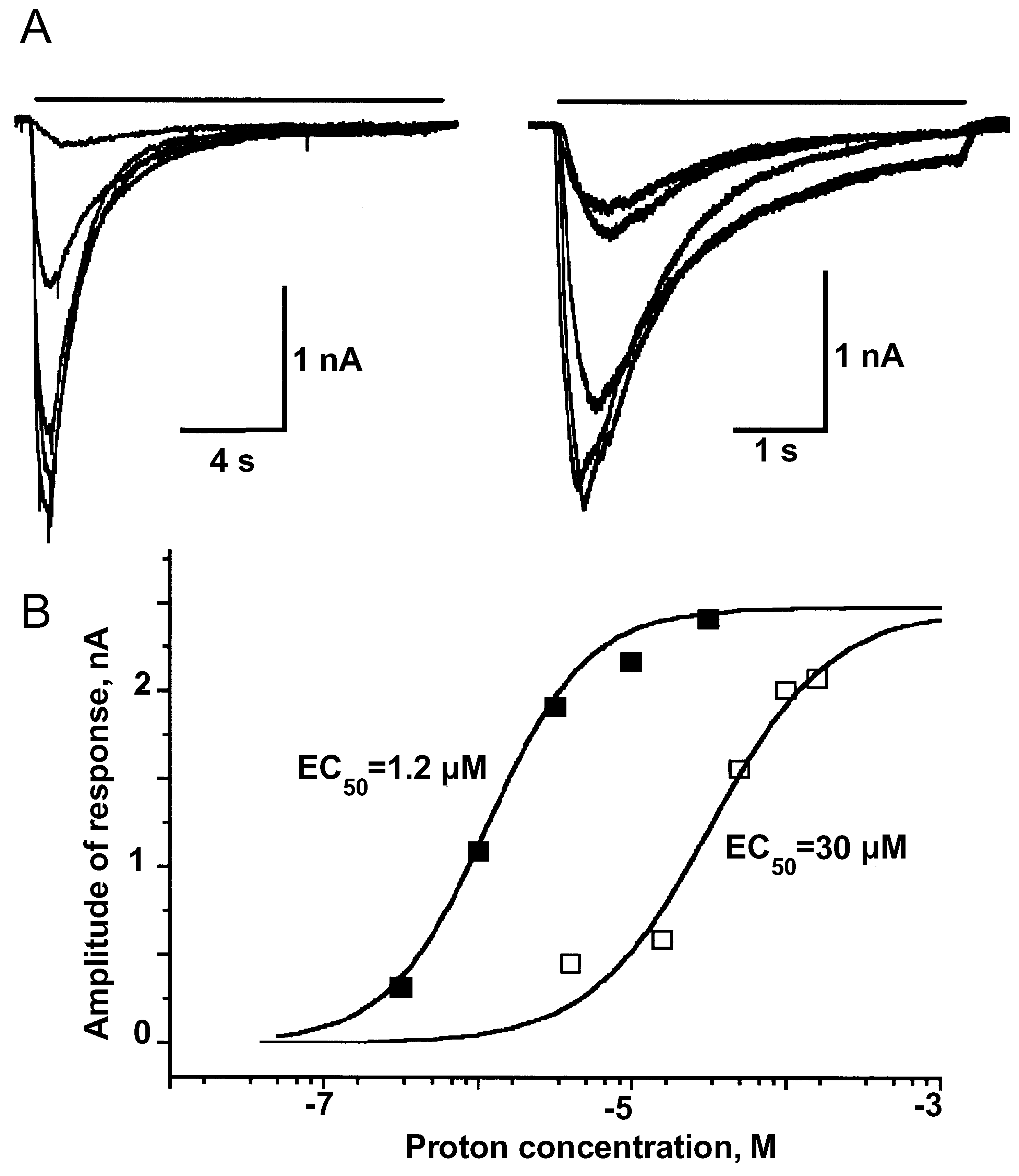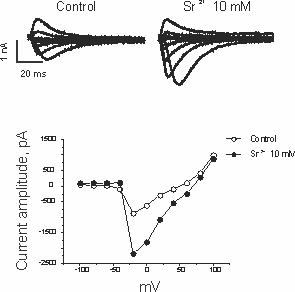
| Imaging | ||||
| Programming | ||||
| Electrophysiology | ||||
| Teaching | ||||
| Microscopy & image processing | ||||
| Programming | ||||
Electrophysiology
Selected electrophysiological measurements
 Effect of IEM-1925, a selective channel blocker of calcium-permeable AMPA receptors, on hypoglossal motoneuron EPSP. (A) Synaptically evoked currents in control solution and in the presence of 50 mM IEM-1925. (B) Time course of changes in amplitude of EPSCs following application of IEM-1925 (50 mM) and drug washout.
 Proton-like currents in human and mouse neutrophils were not sensitive to iberiotoxin but were blocked by Zn2+. Currents in human and BK-/- and BK+/+ mouse neutrophils were recorded in the absence and presence of 1 µg/ml PMA (5–7 min after stimulation), in the presence of 1 µg/ml PMA + 100 nM iberiotoxin (10–15 min after application), and in the presence of 1 µg/ml PMA and 3 mM ZnCl2 (1–3 min after application). Amphotericin-perforated cells were voltage clamped at a holding potential of -60 mV and pulsed for 8 s from -60 to +60 mV in 20-mV increments every 20 s. Recordings were performed in symmetrical high-K+ aspartate solutions supplemented with NH4.
 Hyperforin-induced TRPC6 single channel activity is blocked by gadolinium ions. A) Top panels: currents recorded in outside-out patches from TRPC6-expressing cell at the holding potential of –60 mV before (left trace) and after application of 10 µM hyperforin (middle trace) and 100 µMGd3+ (right trace) to the bath solution. Bottom panels: amplitude distributions of detected channel openings shown on the top and calculated from current traces of 50 s length. B) Left: single channel amplitudes in control (white), after application of 10 µM hyperforin (black) and after 100 µM Gd3+ in the presence of 10 µM hyperforin (gray; n=5). Right: NPo in control (white), after application of 10 µM hyperforin (black), and after 100 µM Gd3+ (gray) (n=5).
 A. Extrapharyngeal recording (EPG). An example of extracellular recording of action potential from a wild-type (N2) pharynx. The peaks detected reflect: e – corpus contraction, E – terminal bulb contraction; P – M3 „Inhibitory potentials"; R – corpus relaxation, r – terminal bulb relaxation. B. Intracellular recording of action potential from the terminal bulb of a wild-type (N2) pharynx. High resistance (50 MOm, alumosilicate) sharp microelectrode was used. C. Simultenious measurement of calcium waves (genetically encoded calcium indicator GCaMP3) and action potentials (extracellular recording) in C.elegans pharynx. The calcium increases detected in pharyngeal muscles (the graph above) are associated with the trains of action potentials (the bottom graph). D. Optogenetic control of the pharynx pumping rate in a C.elegans worm which expressed ChR2 under myo-2 (a pharynx specific promotor). In an initially silent pharynx (control), millisecond 470 nm light pulses of different frequenses (0.25, 0.5, 1, 2 and 4 Hz) evoked pharyngeal contractions and action potentials. Action potentials were detected by extracellular recordings (EPG).
|
| Kirill Esin, essine_kv@yahoo.com |


